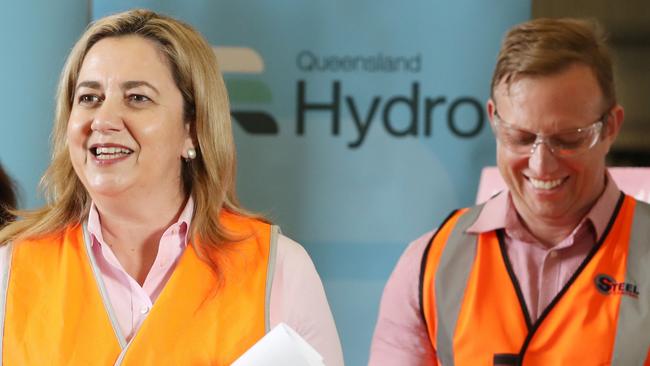Queensland confident massive dam fits the platypus bill
The massive new dam at the centre of Queensland’s $62bn renewable energy strategy could impact vital platypus habitat.

The massive new dam at the centre of Queensland’s $62bn renewable energy strategy will require the compulsory resumption of at least 50 cattle and cane properties, and could impact vital platypus habitat.
But Energy Minister Mick de Brenni insisted the nascent Pioneer-Burdekin “mega project” – which could be the world’s largest pumped hydro energy storage scheme if it gets built – was not another doomed Traveston Dam.
The former Beattie Labor government sparked major protests and community backlash in 2006 when it proposed the $2bn Traveston dam, near Gympie in South East Queensland, forcing the acquisition of hundreds of properties. In 2009, then-federal environment minister Peter Garrett rejected the proposal, on the grounds it would impact endangered animals including the Mary River turtle and lung fish.
Mr de Brenni – flanked by Premier Annastacia Palaszczuk and senior ministers who flew to Mackay on Thursday to spruik the ambitious new renewables plan – said there was “no risk whatsoever” of a Traveston repeat.
“This project is entirely different,” he said. “We’ve researched around 1000 sites across the state, and this one stacks up as simply the best pumped hydro-electric opportunity anywhere in Queensland … of course we’ll work through all of those appropriate environmental approvals.”
Ms Palaszczuk on Wednesday revealed the state would end its reliance on coal-fired power by 2035, replacing the baseload electricity generation with pumped hydro storage. She said the government would legislate new renewables targets of 70 per cent by 2032 and 80 per cent by 2035.
The entire scheme is dependent on the Pioneer-Burdekin project, which relies on hypothetical funding from the federal government, and detailed environmental, engineering, and community consultation work that has not been done.
One veteran canegrower, who has a property in the Pioneer Valley at Netherdale, said he was in “disbelief” and worried his farm would be flooded by the dam. He has not yet been consulted by the new Queensland Hydro government-owned corporation, which is due to report back to government in 2024.
The government’s press release noted: “Queensland Hydro will also continue to investigate other large-scale, long-duration pumped hydro sites in the event the project is unable to proceed.”
A spokeswoman for the Department of Energy and Public Works said about “50 buildings will potentially be impacted, however final project design will be determined when we complete all the necessary studies”.
“We are committed to protecting our national parks and native animals; the project requires detailed environmental impact studies to be undertaken as part of the approvals process.”
Mackay Conservation Group co-ordinator Peter McCallum said he was concerned about the impact on platypus habitat and environmental flows in the Pioneer Valley.
“We’ve tried to get information about this project for quite a while, and nothing’s been forthcoming … we were deflected at every opportunity,” Mr McCallum said.
Canegrowers Mackay chair Kevin Borg said he had been assured by government representatives that growers’ existing water allocations for irrigation would not be affected.




To join the conversation, please log in. Don't have an account? Register
Join the conversation, you are commenting as Logout